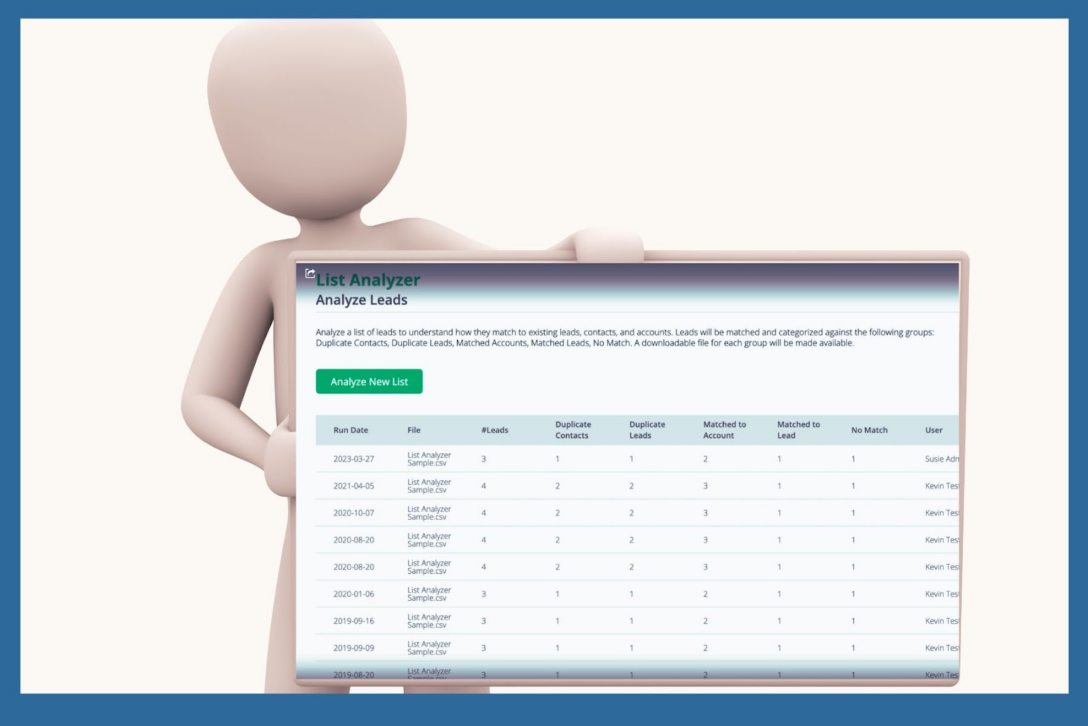Hey lead management pros!
Imagine a hot lead visits your website. They’re a perfect match with your ICP and a decision-maker with money to spend. They submit a demo request through your webform. You receive the webform, put it aside for a few days, and ultimately decide not to follow up.
You’d never turn away any prospective buyer, right?
And yet this happens, under the radar, everyday.
Problems with lead management run the gamut from record duplication to lost leads to uneven lead distribution. But how would you even know these lead shenanigans are happening? Prospective customers don’t complain about a bad buying experience.
Unfortunately, they just silently take their business elsewhere.
In this article we’ll share how LeanData customers put an end to the needle-in-a-haystack dilemmas of lead management and protect their revenue engine by increasing visibility into their processes.

Solving Lead Challenges Through a Visual FlowBuilder
Everbridge is a critical event management platform used by 6,500+ global organizations for public safety and emergency response communication. With routing systems formerly housed in two separate platforms, Everbridge’s Marketing Operations team noticed multiple inefficiencies in their lead management process.
First, Sales team members spent valuable time manually matching leads or creating new accounts which resulted in an even more inaccurate database. In addition, Leads were not nurtured and moved through the flow because of inactive owners and erroneous object reassignments. Even the process of recycling inactive records was being done manually.
These practices caused record duplication, lost leads, and uneven lead distribution.
Everbridge recognized the importance of having one platform that could support the company’s complex needs. Upon implementing a lead matching and routing solution, Everbridge now builds and manages routing logic using LeanData’s visual FlowBuilder, making it easier to troubleshoot.
As a result, all updates are made in real time and the data itself is cleaner.

Preventing Duplicate Data With List Analyzer
Founded in 2019, Remote helps companies hire talent from all over the world by providing onboarding and payroll services for employees and contractors in 150+ countries.
One of Remote’s pain points surrounded the issue of list uploads for post-event campaigns or simply content syndication. Inconsistent data added a lot of manual steps in the list upload process.
To solve this issue, Remote implemented LeanData’s lead-to-account matching and routing solution which includes a feature known as List Analyzer. This tool compares a list of people to Leads, Contacts or Accounts in Salesforce without updating Salesforce. The List Analyzer gives Remote visibility into existing data and prevents duplicates. Specifically, Remote uses the List Analyzer to align new data before it’s uploaded to Hubspot.
After uploading a more accurate list to Hubspot, automation initiates a workflow where field values are updated and the contacts are added to a Salesforce campaign. This action triggers routing, alerts the appropriate rep, and the contact is then added to the applicable Outreach sequence.

Increasing Visibility to Inform Business Decisions
F5 is a cybersecurity company that helps organizations optimize and secure their applications and API. F5 noticed that their existing lead assignment rules within Salesforce were causing leads to either sit unworked in queues or route to the wrong sales representative. To combat this problem, F5 implemented LeanData’s lead-to-account matching and routing solution which included tracking and reporting data.
Now armed with new reporting data, F5 noticed that leads routed directly to Account Managers were not receiving a timely response. Equipped with better visibility into the process, F5 shifted their lead routing strategy.
As a result, Leads are now routed to BDR teams solely focused on quick follow up. Because of this shift, F5 has seen a huge uptick in response rates, driving a better customer experience.
In addition, these new tools help F5 track key business metrics like:
- How many meetings are generated from leads?
- What’s the pipeline contribution from different business units?
- How quickly does follow up occur with different types of leads?
- How much revenue is closed from the leads?

Greater Visibility Means Greater Control in Lead Management
Whether it’s concerns over fair lead distribution or lead response time, companies need to know what happened to a lead. And typically, solving lead management mysteries can be labor-intensive.
As demonstrated by Everbridge, Remote, and F5, increasing visibility into lead management processes exposes common problems earlier. This greater control helps organizations respond more quickly with solutions that protect the revenue engine of the business.










